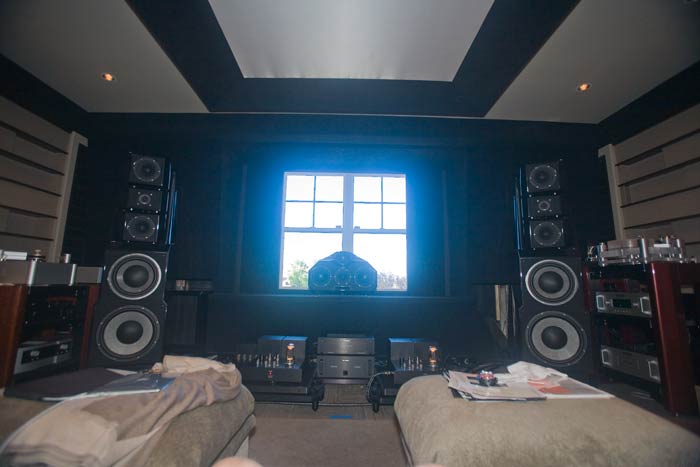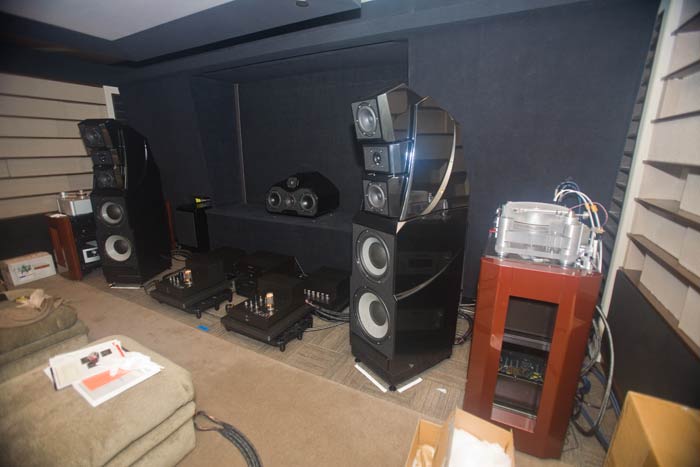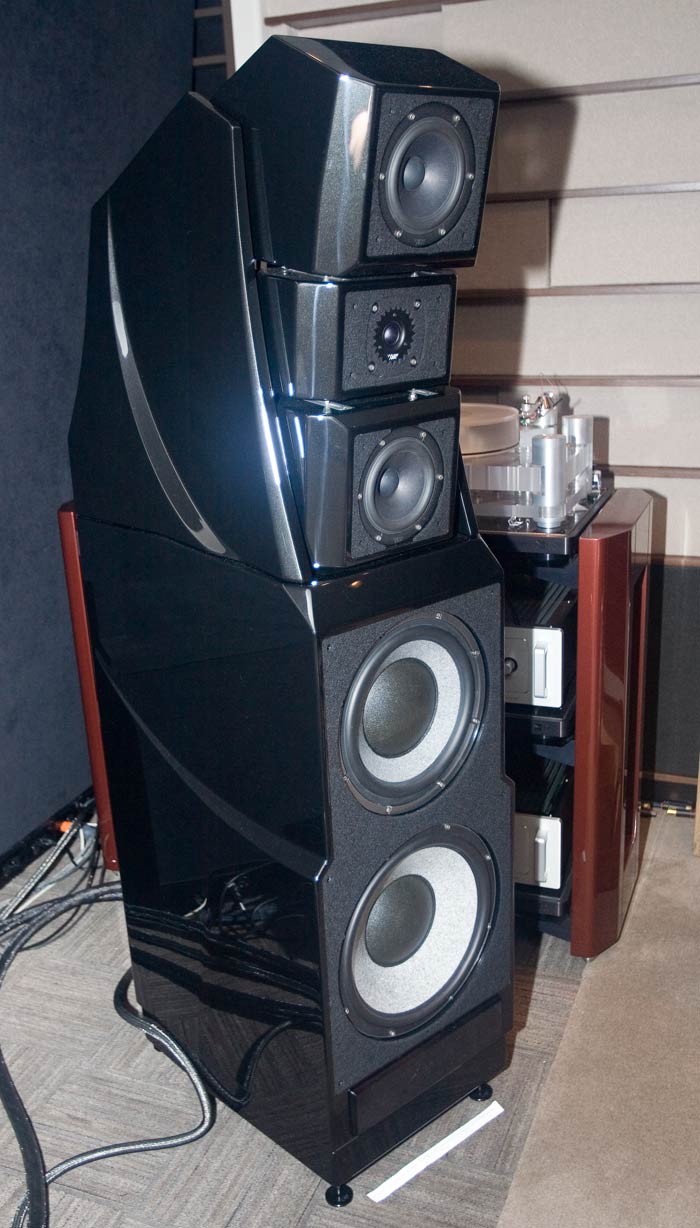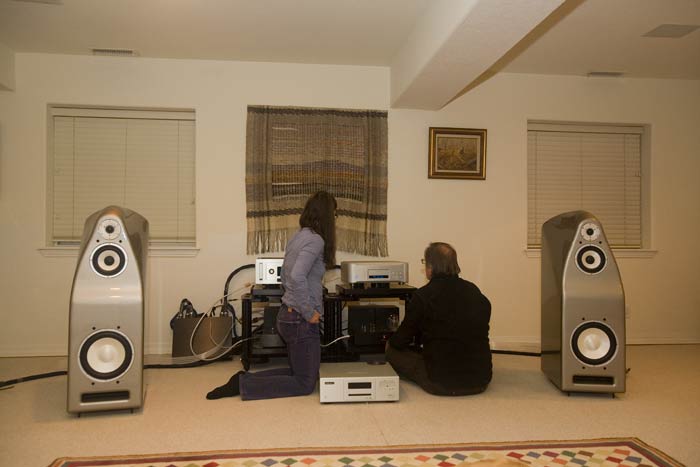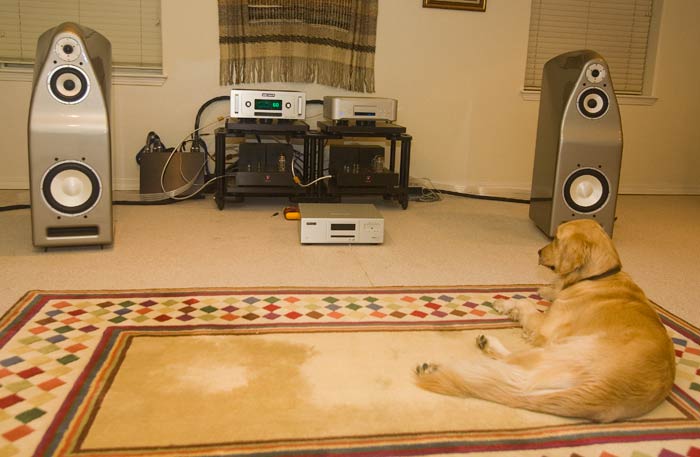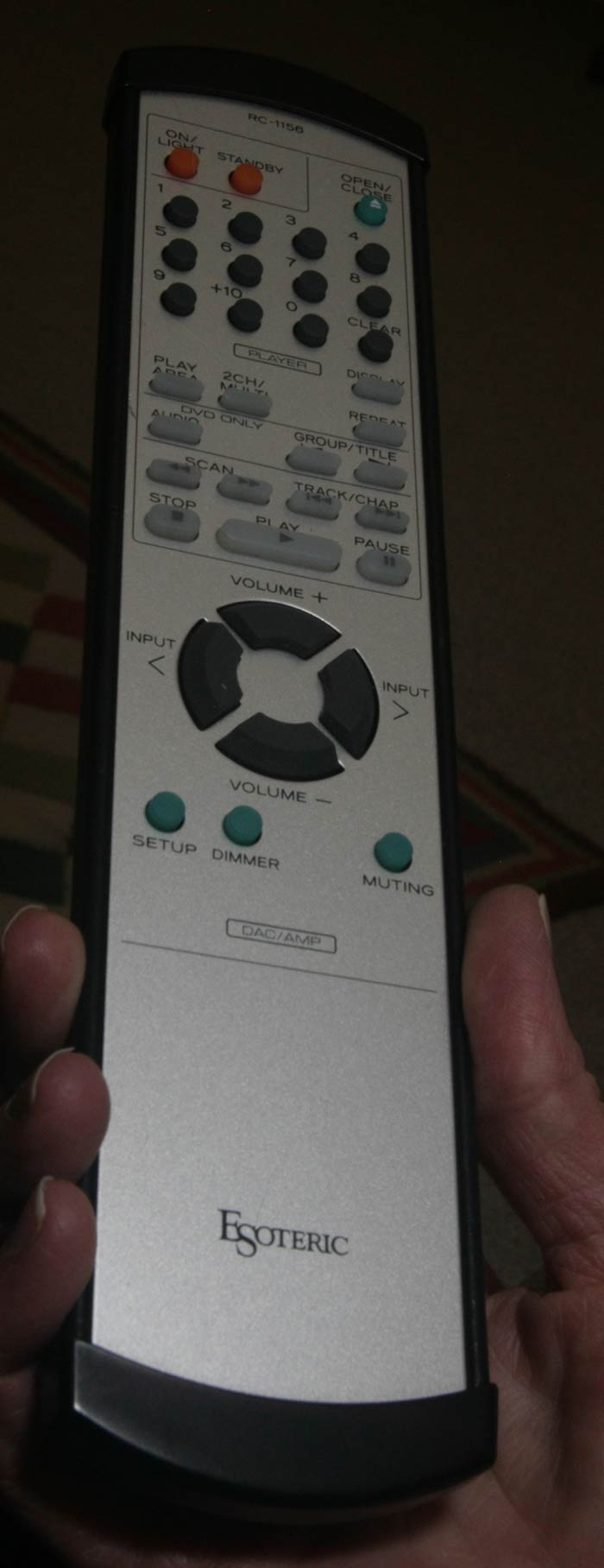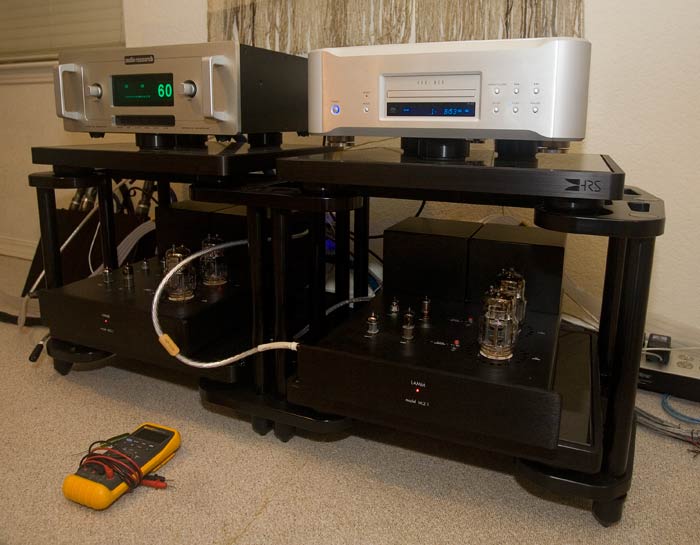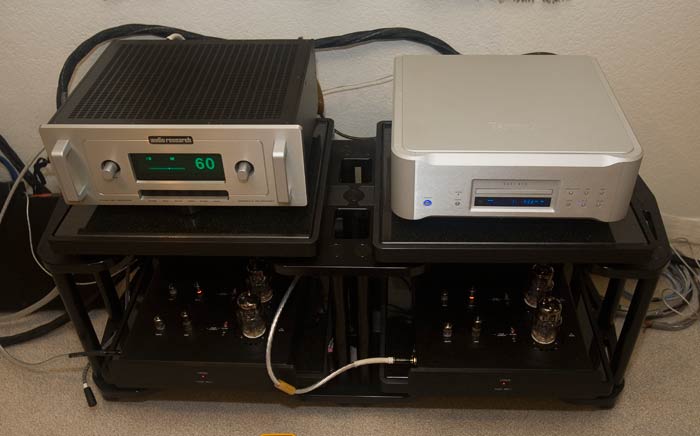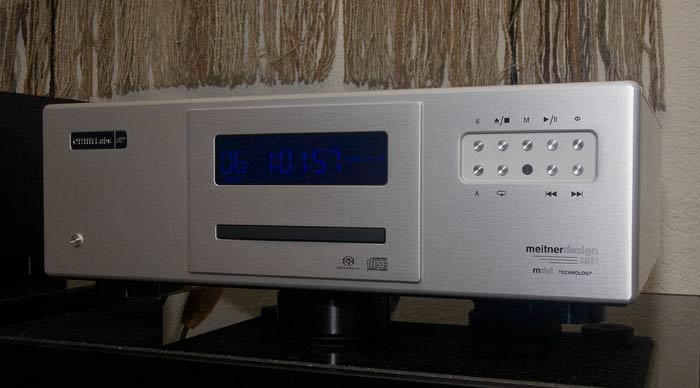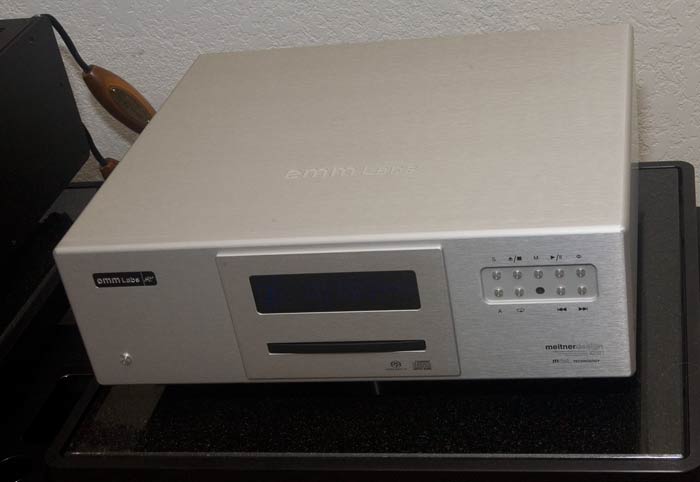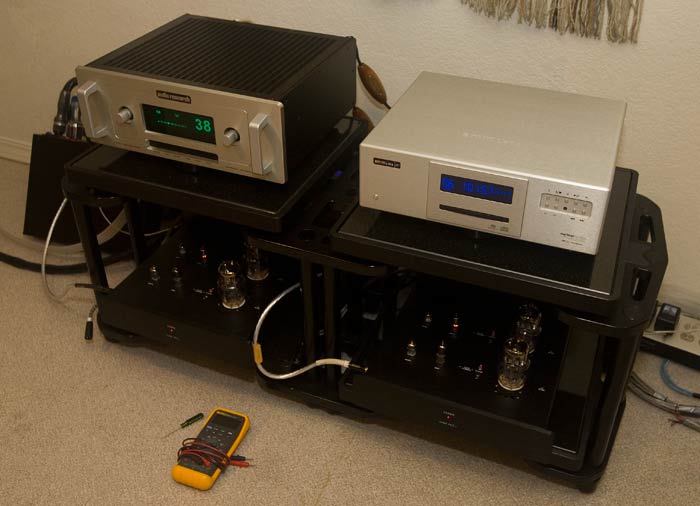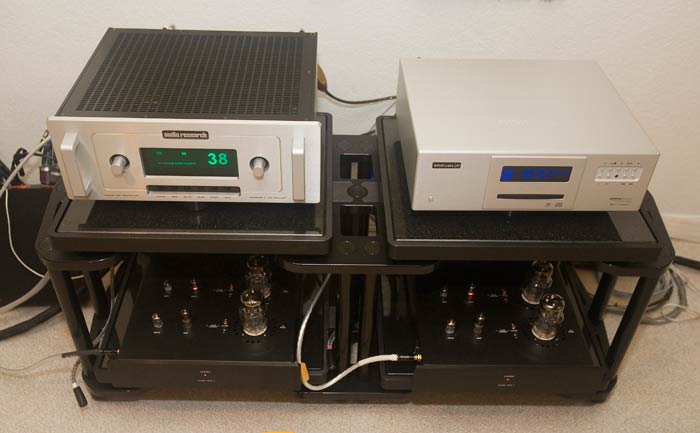[continued…]
12. (or 11b.) Mr. Fremer didn’t try hard enough to personalize the system to his particular tastes
Supposing you are like Mr. Fremer and are in the situation where you think there should be / want there to be a stronger more physical presence to your double bass notes on this track. Sounds reasonable. Well, you say to yourself [because you spend a lot of time alone in your listening room, saying things to yourself is now second nature], ‘it behooves me to try and optimize the system so that it will do this bass thing. The system should do what I want, darn it [and hopefully I won’t muck up something else in the process!]’. Because you got all this obviously nice gear, you must have some amount of money lying around [not that you are likely to ever, EVER admit it to anyone else, especially your dealer and significant others ;-)] and so, you say, lets try a few different powercords on the amps. Lets make sure each component in the chain is optimized – both vis-a-vis powercords and vibration control [tube amps are much more susceptible to attenuation of the bass response, and dynamics in general, due to deleterious vibrations than most solid-state gear because tubes themselves are so susceptible. And something about the Lamm chassis also make Lamm amps more susceptible than most tube amps we have played with as well. Just think of it as having to buy special tires for your new Porsche, except these ‘tires’ won’t wear out every 6 months].
13. The other expensive tube amp that Stereophile has reviewed… in 2004. The WAVAC.
So, anyway, Mr. Fremer says some nice things then … oh wait, he first talks about the $350K WAVAC SH-833. 2004 was a long time ago. I do not understand the phrase ‘pants-down performance!’ in this context. But moving on… Relying on the 5W [supposed power required by the Alexandria speakers] obtained from an analog meter on any amp is fraught with peril, but the ML3 does drive the XLFs quite, quite loud in our experience as well – so we reached the same conclusions here. They lost me at ‘excessive warmth from the WAVACs’… but hey, it was 2004, we are all a lot smarter now. [We find the WAVACs to be a little on the cool side of neutral but with the warmth ultimately being quite susceptible to upstream electronics – so their level of warmth is kind of however warm you want them to be].
Then, skipping the part where Mr. Fremer attempts to remember the linearity of the WAVACs, 10 years ago, on no doubt inferior speakers [hey, not criticizing, we all have to do the miracle memory thing from time to time (its not like we can go back in time or… record what the system sounded like so we can replay it for future years and generations… or can we?)], he says:
14. Summing up. The Nice stuff.
“…though not as linear or well-controlled as the darTZeels, but it was close enough to call it a trade-off…”
And this is my point. Even in the mist of a riot of solid-state zealotry [yes, zealotry. To put this kind of over-the-top pro-solid-state ideology in physical print like this means there are some powerful anti-tube feelings here] there is sentiment that these amps perform as good as solid-state amps in this area where typically solid-state amps perform best – i.e. just amplifying input in a predictable, linear manner. I think then that at some level Mr. Fremer agrees that these amps are indeed this new kind of amp that does just what amps are supposed to do, no more, no less. And tube amps got here first [ha ha! 🙂 We’ll address the other issues Mr. Fremer has been harping on: leading edge dynamics and overall dynamic solidity, which we talked about above – later in our conclusions below].
So Mr. Fremer then concludes, after the traditional nicey nicey words [are you like me and always skip to the last paragraph? Thank goodness for the ‘summing up with caveats’ review tradition we have in this industry – otherwise we would all have to read the entire text of these review thingies], he says:
“… gulf between solid-state and tube amplification remains…” This is his religious fervor talking again. The gulf that is important in this context is the gulf between amps and musical truth. Not between various failed attempts and other failed attempts. The majority of this review has Mr. Fremer stomping his feet ‘Noooooo! solid-state still rules!’, and so seriously, one has to think that he was somehow threatened by the ML3’s shrinking of this gulf to this extent.
15. Summing up. The solid-state hard-line theology. And the point.
Then “if you want weight and articulation on bottom, especially if you listen to a lot of electronic and/or amplified music, you’ll probably…[want] solid-state”.
What a weird thing to say.
First, I am the only one I know in the audiophile community who listens to a lot of electronic music [about 1/3 of my several 1000 CDs. Neli doesn’t like it (nor hate it) so we do not listen to it as much as other music]. In some sense Radiohead and Sigur Ros are mostly electronic music with voices. And we listen to a ton of this kind of stuff.
There are a lot of parts to electronic music that an audiophile can be attracted to:
A lot of it consists of multi-layered soundscapes. The layers are composed of sounds and arranged in complex and/or entertaining ways for your listening pleasure. The layers are organized by frequency, location, magnitude, by everything you can think of. The ML3, in my fervent opinion, is truly the best amp for this kind of music.
Then there is techno [and its hundreds of offshoots]. A lot of rapid bass beats with guitar-like keyboardish sounds sprinkled in. Seriously, one needs a speaker with a basshorn or a cheap club-like speaker like the Genelecs or something. Everything else is too slow: certainly the XLFs, and even the Coltrane Supreme speakers, which has the best, most articulate bass of any cabinet speaker [obvious to people without an agenda], but still doesn’t have that club-like techno heart-thumping chest-punishing beat [at least not at the volume we are willing to play them at!].
By amplified music… does that mean Rock and Roll? I guess it means everything except classical and acoustical new age and world music. Most of our collection is rock. Most of what we have played on the ML3 is rock. It feels a little sacrilegious: Vladimir and Elina Lamm listen to something like 99% classical and 1% jazz. But rock sounds way better on these amps than expected. I am always surprised. Maybe my expectations are low. One expects amps like the big VTL or hugemongous Boulder amps would be required to wail away on the speakers [ROXannne….], that this kind of machismo amp is required to kick their [the speakers] butts into high gear. But nope, the ML3 rocks out with the best of them [Noooo… not Twilight Zone theme time… Perhaps the beginning to the 2001 theme…?].
And as far as “articulation on the bottom” goes… Besides the leading edge of the loudest notes that occur during a musical passage in the lower regions, solid-state does a particular BAD job at bass articulation. Seriously, look beyond the edge, Luke…
14. Well then…
So, what Mr. Fremer is really saying, as he has said throughout the review, and omitting the anti-tube bias, is that the ML3s did everything better [or as good as] than any other amp except for the sharp leading edge on some notes, primarily the bass notes, nor did it have the same solidity and weight in the bass, that he prefers when his system plays back amplified music.
And what I am saying is that, omitting the anti-anti-tube bias, is that the process for optimizing the sound of a tube amp is different than that for a solid-state amp, and that with a few adjustments and tweaks here and there, mostly to do with protecting the tubes from harmful vibrations, the ML3 can get as close or closer to ‘real sounding’, in those specific areas that Mr. Fremer is concerned with, as any current solid-state amp on these speakers. Using a Lamm preamp instead of the darTZeel preamp will almost certainly increase the solidity and palpability of the midrange and lower registers, and most of all the dynamic response [especially when using the Lamm LL1 Signature which is the matching preamp for the ML3 (and about 1/3 the price of the darTZeel preamp)].
Mikey was so close!
The Lamm ML3 Signature amplifiers are a breakthrough product breaking significant new ground for linearity and balance [even-handedness across the frequency, harmonic, time and dynamic spectrums] and textural resolution [the entire Oreo cookie] against a background of extreme quietness. This is the audiophile’s ultimate amplifier to geek out with, it is probably the closest we need to get to straight-wire-with-gain, and it is extremely Enjoyable to listen to.
In this new Golden Age there have been and will be other break-throughs. It is important to differentiate good products from break-through products so reviewers just don’t start labeling everything everywhere as ‘break-through’ products. This we will do in an upcoming post, and we will compare break-through amps, cables, etc. which help the listener hear ever deeper into the depth of musical compositions.
Welcome to the new [golden] age everybody.
15. P.S.
Mr. Fremer talked a bit about how the listener is actually connecting to the Music [yay!]. But the impression I was left with was that there was always this lurking fear in the background that ‘Oh my, I am enjoying this passage too much… therefore the sound must not be real or accurate anymore [Awooga… Awooga… its a Tone Control. Its a TONE CONTROLLLL!]’.
In a large sense the measurements-first, ‘the reproduction must be as accurate as possible’ approach, preferring to err always on the side of sterility, is really kind of navel watching at its finest. Comparing this to painted portraiture, a portrait capturing some of the inner life and strength of, say, George Washington, is preferable to a photograph taken by an old smartphone, which, although potentially more accurate, and you can see that it is The Man with the long curly white hair – it does little to reveal much about their personality and character, which, after all, is why we care to even bother looking at [listening to!] them at all. We really want, most of us, to connect to them as people/music.
I am not talking Picasso or Gauguin-like interpretive art here … even though I do think impressionistic systems have their place, and in some ways may be preferable, when one starts wanting to explore some of the deeper, spectacular meta-verses of the Human-Music interface [although, seriously, the uber high resolution texture of the music heard through the ML3 opens up a LOT of doors / stargates. At least it did for me.]
16. P.P.S.
Yep, it is too darn expensive. All the break-through products I know of are [unless one includes the old EMM Labs CDSA]. Until the middle-class stops shrinking and ‘discretionary middle-class income’ ceases being an oxymoron, we are probably stuck with these high prices for awhile [and while we are all waiting manufacturers will hopefully build a few more of these kick-ass take-no-prisoners betchya-never-woulda-thunk-it toys to bring us all closer to the Music].
We still would like to have this Wilson Alexandria XLF / Lamm ML3 Signature system here sometime, as our primary system. Last I heard this is the system that Wilson himself listens to. The older Alexandria X2 might do as well – the used ones have been going for an amazingly reasonable price. But getting 700 lbs up our 45 steps here…? Been there, done that, REALLY don’t want to do it again. When all is said and done we still need to sell this house and move somewhere a little bit more crazy-audiophile friendly.


